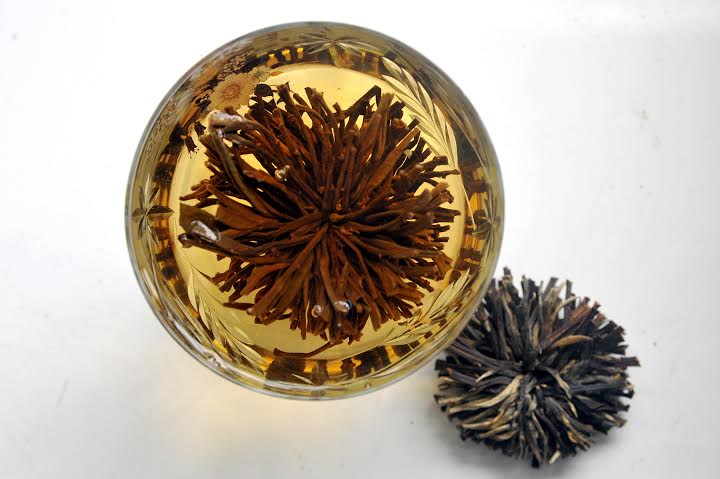How to drink black tea correctly? Beginners choose suitable tea from brown color, tea aroma and tea taste.
How would you like your black tea? -- A seemingly ridiculous problem, but it has its own attention and reason in it.
Of course, I don't want to teach the professional taste method of sucking and gargling and using all kinds of evaluation terms here at all. For me, black tea is the joy of daily life, relaxed and leisurely, is the real way to wander.
Even, therefore, write down the feeling and touch brought by each cup of tea, this joy and beauty can also last longer.
It can be roughly divided into three processes: color, aroma and taste.
Brown color
You can "watch the color" before drinking tea. The so-called color refers to the appearance of the tea: is the color green, golden, golden, bright red, bright red or dark red, brown red? Is the texture clear, clear or deep and dark?
Different appearance, often reveal different origin, type, taste information: is the tea garden high or low? Is the leaf shape intact or fragmented? How many buds and leaves? The degree of fermentation? Brewing time? Thick and light taste?
Generally speaking, the soup color of people with high altitude tends to be clearer than that at low altitude, those with low fermentation degree are lighter than those with high fermentation degree, and the whole-leaf tea or those with short brewing time are clearer. You can have a general idea before the entrance.
Tea fragrance
Smelling incense is a very enjoyable stage in the process of tasting and drinking. After all, many studies have proved that there are only a few kinds of taste in tongue buds, but the sense of smell can be tens or even hundreds.
Put the tip of your nose into the liquid surface, inhale and smell deeply, and you can feel all kinds of fragrances coming from your nostrils. At this time, you can recall all kinds of fragrance memories in your mind and try to define what you smell:
Is it floral, fruity, grassy, nutty, creamy or woody? You can even use a variety of real things to describe it: grapes, melons, pears, tropical fruits, malt, cinnamon, mint, roses, orchids, forests, moss.
The main purpose of describing the aroma is to help you understand and remember the various characteristics of this cup of tea, and even distinguish the origin or type of tea according to it. for example, the musk grape in Darjeeling, the mint in Taiwan tea No. 18, the orange in Earl Grey Tea, and the longan in Zhengshan race. Leave a clear track for the road of tasting and drinking.

Tea flavor
Put the tea into the mouth, gently turn the tongue or even inhale, so that the tea can be found in every corner of the mouth, so that you can fully grasp all kinds of flavors. The whole process of taste can be subdivided into three stages: "taste", "taste" and "aftertaste".
There is no doubt that the time for pleasure and enjoyment has come! The cognition, understanding and love of this cup of black tea are finally about to be completed.
First of all, feel the taste of tea carefully, is it sweet, sweet, bitter, sour or astringent? At the same time, with the help of the sense of smell behind the nose, once again experience, which of those aromas just felt in the incense stage, which are also blooming at the same time, or even more?
And then taste. This is closer to the tactile effect of the mouth: is it thick, full, solid and heavy? Or is it light, light, slender and soft?
Yu Yun. When all the tea juice is swallowed, and let us be quiet for a moment and understand it carefully, what about the aftertaste between the tongue and the throat? Is it short and fleeting, or is it a long circle around the beam? Is it graceful and fragrant, so comfortable that you want to have a few more drinks? Or is there a gradual emergence of indecent discomfort, foreign taste, and compassion?
I always think this is the most graceful part! Strong aroma and taste may be charismatic for a moment, but only after rhyme can there be no escape between good and bad.

Important Notice :
前街咖啡 FrontStreet Coffee has moved to new addredd:
FrontStreet Coffee Address: 315,Donghua East Road,GuangZhou
Tel:020 38364473
- Prev

Differences in the characteristics of black tea from highland, middle and lowland in Sri Lanka
Climbing the mountain road with nine curves and eighteen bends by bus, the side of the road is densely planted with black tea trees as high as car windows, so close that you can almost pick fresh tea with your hand out. On the other side, it is a chilling deep valley. Falling down a steep hillside will definitely cause a big deal, but it is also covered with tea trees. The soil is red, and the soil washed out when it rains dyes the road.
- Next

What is the new lucky Walden blue? Which one tastes better, Luckin Coffee Ruina ice series or latte?
Hi, pick it up! "eat so sleepy" to "dry" Rui Xing Rui Na Bing, we have come to evaluate again. Photo this issue evaluation theme: Ruixingruinabing yyds series of other (seemingly) delicious latte series do not procrastinate, let's go straight to the theme! Raw coconut latte > meteorite thick milk latte > Haas avocado Renna iced matcha latte > Val
Related
- Why does hot American coffee taste bitter? Difference in proportional concentration between hot American and ice American
- Is espresso stored overnight in the refrigerator harmful to your body? Is frozen coffee better than freshly ground coffee?
- What parameters and proportions of water temperature should be used to grind and brew fresh coffee beans? Why can't I drink freshly roasted coffee right away?
- Customers have "changed" Manner's new products! Shop assistant: Please don't mess around!
- Remove sockets in customer areas at Starbucks stores?! Netizen: I won't go if I really tear it down
- What is the difference between the taste steps of sun-dried coffee and washed coffee? Why is sun-cured coffee sweeter and washed coffee sour?
- The recipe for salty grapefruit dirty is revealed! Coffee Festival salty grapefruit dirty coffee making materials parameters ratio milk share!
- How about the flavor of Sunlight 74158 at Sidamo Banshaha Mathieu Processing Factory in Ethiopia? 74158 Share the proportion of coffee brewing parameters!
- What effect does Italian American coffee with filter paper have? Will coffee taste better if it is put on filter paper at the bottom of the powder bowl?
- What is the color difference in coffee beans? What are the characteristics of honey processed coffee beans? Why are the anaerobically treated coffee beans uneven in color?

